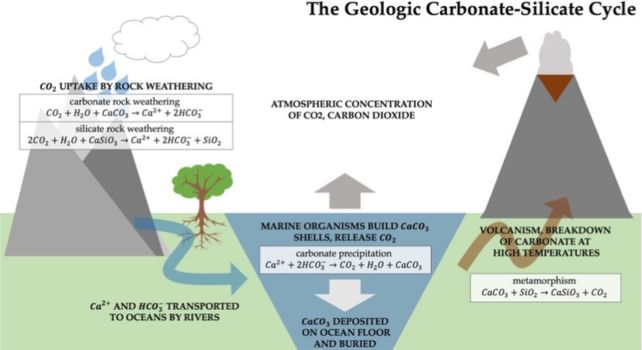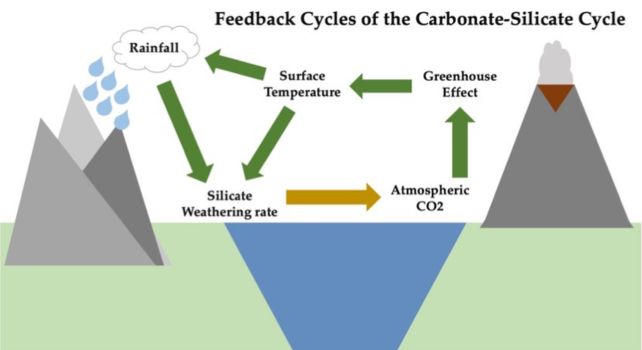If Earth's life survives the Anthropocene, it will eventually face another existential threat from space.
As the Sun brightens with age, it will inevitably interfere with our planet's finicky carbon cycle, triggering a depletion of atmospheric carbon dioxide to the point where plants will starve.
Luckily, this won't happen until at least 1.6 billion years from now, suggests new research from University of Chicago geophysicist RJ Graham and colleagues. That potentially doubles the projected lifespan of Earth's plants and animals.
This is great news for anyone hoping for extraterrestrial life, as it significantly extends past estimates of how long Earth can maintain a functioning biosphere – our only data for this in the entire Universe. It therefore expands the estimated length of time complicated life has a chance to evolve within.
The results "would suggest that the emergence of intelligent life may be a less difficult (and consequently more common) process than some previous authors have argued," Graham and team write in their paper.
"Though since the hard steps can have arbitrarily small probabilities of occurring, intelligent life could still be extremely rare even with just a single hard step."
Given our current situation, it may seem counterintuitive that a warming Sun could drive a decrease in atmospheric carbon. But the rate of warming would be vastly slower than today's, emphasizing different geological processes.
Over time, weathering of Earth's silicate rocks by winds and rain causes them to absorb CO2, which is often buried by geological processes, to be later released into the atmosphere by volcanic activity, completing the carbonate-silicate geochemical cycle. This is Earth's major inorganic carbon cycle, and it shifts Earth's atmospheric CO2 over time scales of millions of years.

But as the sun gets 10 percent brighter every billion years, it gradually warms Earth, fueling greater weathering and drawing more CO2 from the atmosphere, which is bad news for plants and all the other life that depends on them.
"This will create an increasingly stressful environment for land plants, eventually driving them to extinction through CO2 starvation, at the CO2 compensation point, or through overheating, at their upper temperature threshold," the researchers explain.
But Graham and team found that with weathering only weakly temperature-dependent as suggested by recent data, the interplay between climate, productivity, and weathering causes the CO2 decrease to slow and even temporarily reverse, delaying plant extinction for as long as 1.86 billion years from now.

However, the researchers caution that their models do not factor in all variables, like cloud feedback and the water cycle, which could change the results.
"A more computationally intensive modeling framework – e.g. a global climate model coupled to an interactive land model with dynamic vegetation – would be necessary to resolve effects like these and quantify their impact on the future lifespan of the biosphere."
Across multiple scenarios Graham and team found C3 plants – the majority of Earth's plant life, whose photosynthesis loses efficiency under brighter, hotter conditions – become extinct before C4 plants. That leaves about 500 million years where only C4 plants like sugarcane and maize exist.
Reduced plant life will of course reduce animal life too, from a lack of food and a very extreme drop in oxygen. But perhaps some anaerobic microbes will survive until our sun gets even more powerful and boils away the oceans.
That is, if we don't wipe out huge swathes of life with runaway climate change first.
"If life is common beyond Earth," Graham and colleagues write, "our conclusions may be testable with future observations of biosignatures on extrasolar planets."
This research was published in The Planetary Science Journal.
